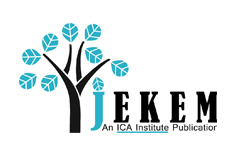Abstract
The history of the modern international monetary system has been one of balanced uncertainty, with a fundamental trade-off - and tension - persisting between it anchoring mechanism and the mechanism for adjusting imbalances within. Ever since the system’s moorings drifted from its anchoring to gold and the assured automaticity of convertibility, the adjustment mechanism to regulate intra-systemic imbalances - floating exchange rates, capital controls, coordinated international intervention, or a combination thereof - has had to be progressively scaled upwards to account for the contingent nature of the tie to gold. Attempts to weave this balance have typically tended to break down over time as structural shifts associated with modern capitalism have overwhelmed the founding design of each monetary order. Looking ahead, a 21st century international monetary order that is entirely de-anchored from gold and rests merely on the full faith and credit of its fiat money trustees will necessitate that its mechanisms of international coordination and adjustment to restore balance be ratcheted-upwards equivalently. The emergence of the BRICS (Brazil, Russia, India, China, South Africa) phenomenon, and the powerful re-rise of China as a global strategic peer competitor to the United States, is likely to heap a layer of complication to this task of international financial coordination. To overcome the fundamental structural tensions that exist within the system – semi-liberalized financial and exchange rate regimes in a universe of fully-liberalized and quicksilver capital flows; basic long-term irreconcilability of the United States’ international debtor status with its principal reserve currency-issuer status; viability of a dollar-dominated monetary system in a progressively China, Asia and BRICS-dominated global economic and trading order, we propose that flexibility and capacity be endowed within the system’s regulatory mechanisms to accommodate – and accelerate - the economic and financial liberalization trajectories, and rise, of its BRICS and emerging markets constituents.
DOI
10.7885/1946-651X.1050
